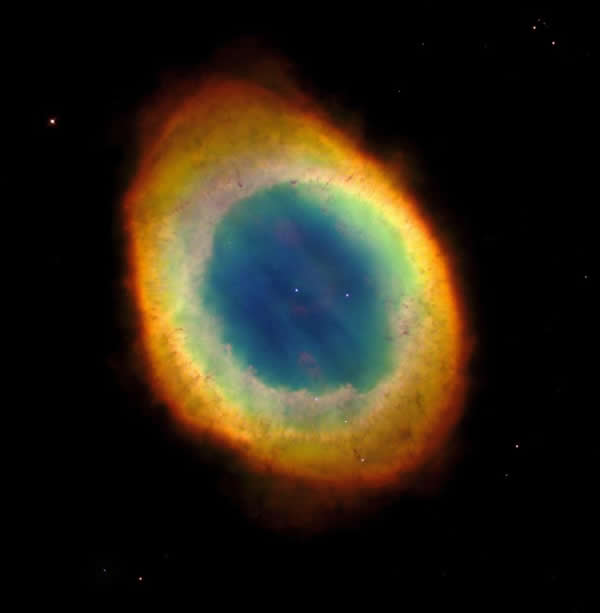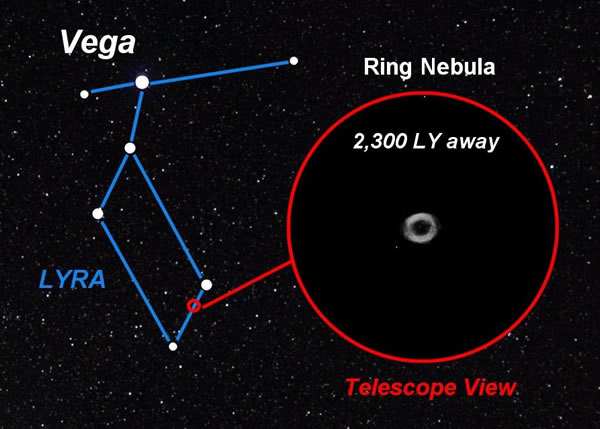4 Sky Events This Week: Cosmic Doughnut, Moon Meets Lion’s Heart
The Ring nebula in Lyra, imaged here by the Hubble Space Telescope, is one of the most famous deep-sky objects for backyard telescopes since it is conveniently located near the bright summer star Vega. Credit: The Hubble Heritage Team (AURA/STScI/NASA)
With the moon out of the way in the early part of this week, starry nights make for a great opportunity to track some down cosmic treasures beyond our solar system.
Ring Nebula in Lyra. On Monday, July 8, the moon is in new phase, making it an ideal time to hunt down the most famous of all planetary nebulae–a psychedelic bubble of gas left behind by a dying star. Start your hunt for the Ring Nebula, or Messier 57, by looking high in the southeast for the star Vega and its constellation Lyra the harp, which marks the brightest corner of the famous Summer Triangle pattern of stars.
Resembling a small equilateral triangle hitched to a parallelogram, Lyra is one of the smaller but more easily recognized classical constellations, visible all summer long. The Ring Nebula is located halfway along the line between the two stars forming the side wall of the trapezoid farthest away from Vega.
The planetary nebula is visible only through high magnification telescopes, and looks like a small pale ring. Long-exposure photographs reveal the nebula in all its glory, showing the expanding ring of hot gas in a beautiful rainbow of colors. While it is a demure object at the eyepiece, it is amazing to think that you are actually looking at a 1 light-year wide shell of gas thrown off by a dying sun-like star over 2300 light years away.
Detailed finder star chart for the Ring Nebula in the constellation Lyra. Credit: Starry Night Software/ A.Fazekas
Rival of Mars. Look toward the low southern horizon late night on Tuesday, July 9, for a bright orange star. Antares is the lead member of the constellation Scorpius, representing the eye of the mythical arachnoid. Lying some 600 light years from Earth, Antares’ name literally means “Anti-Mars,” a handle devised by ancient Greek astronomers because its color reminded them of the Red Planet.
Moon and Venus. On Wednesday, July 10, the moon will park itself near beacon-like Venus. The cosmic pair will be a challenge to see, as they’ll be close to the western horizon. But the pair will be just 7 degrees apart, a little more than the width of your fist at arm’s length.
Moon joins Regulus. By the evenings of Thursday, July 11, and Friday, July 12, the moon will rise higher in the western sky at dusk and will sidle up to the bright white star Regulus–the heart of Leo, the lion. The waxing crescent moon will appear less than 6 degrees away from Regulus, which is 78 light years away.(Posted by Andrew Fazekas in StarStruck on July 8, 2013)













